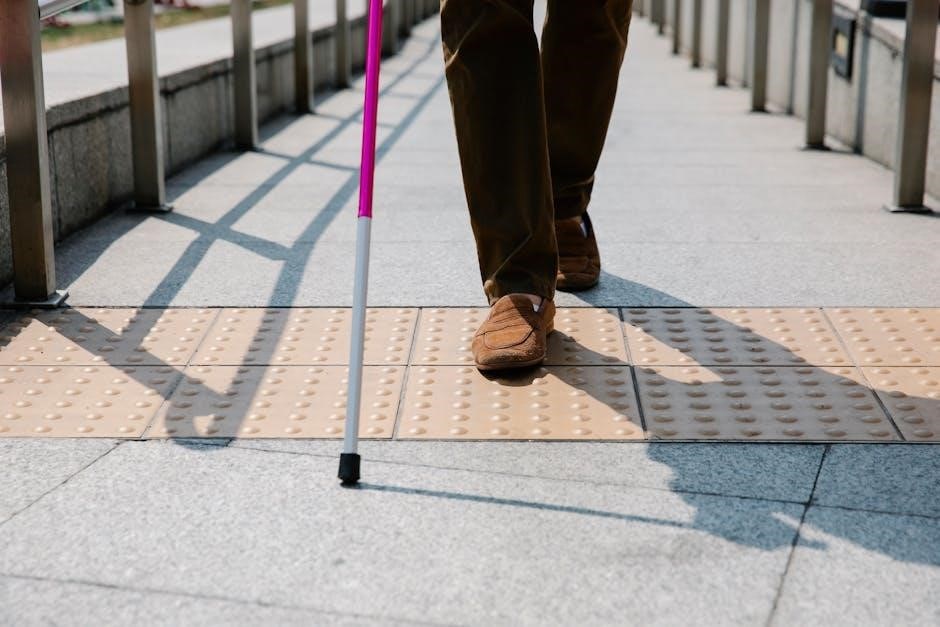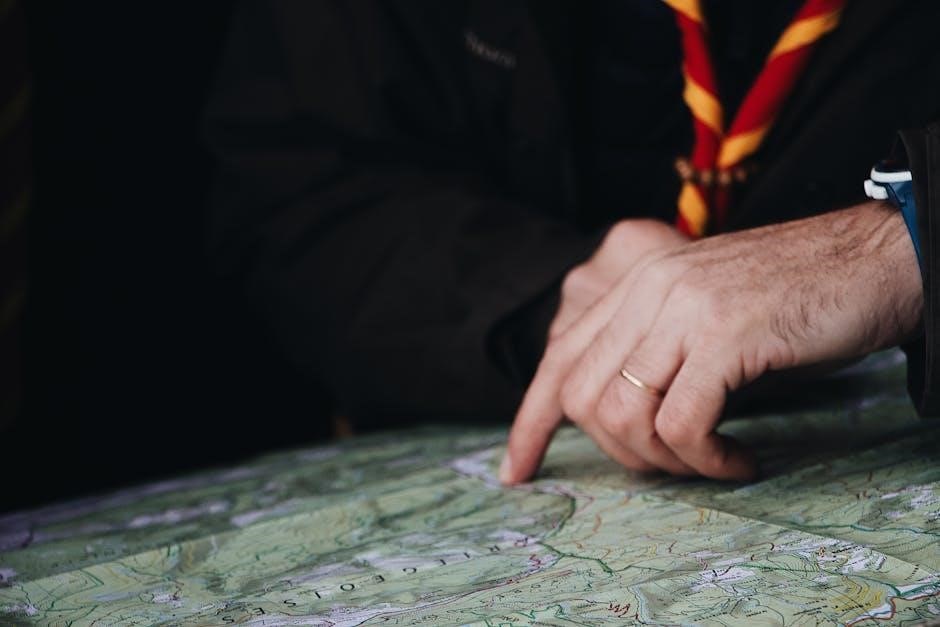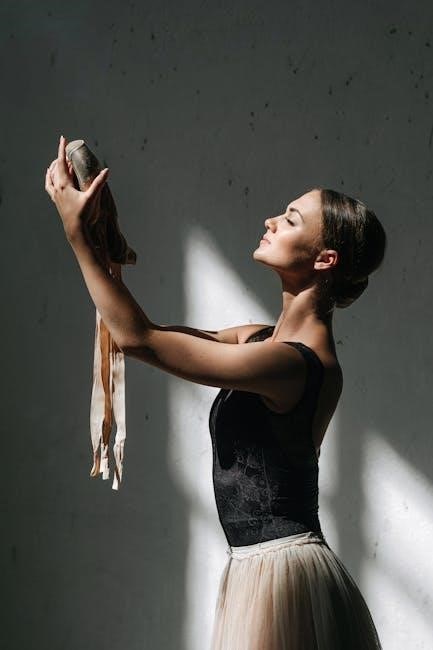and sizes available, proper fitting is essential to avoid injury, and a professional fitter can help find the perfect fit always.
Importance of Proper Fitting
Proper fitting is essential for pointe shoes as it can affect the dancer’s performance and overall health. A well-fitted shoe can provide the necessary support and comfort, allowing the dancer to focus on their technique. On the other hand, an ill-fitting shoe can lead to injuries, such as blisters, bunions, and foot pain. The internet provides various resources and guidelines for finding the perfect fit, including sizing charts and tutorials. Many dance suppliers, such as Bloch and Grishko, offer professional fitting services to ensure that dancers find the right shoe for their needs. By prioritizing proper fitting, dancers can minimize the risk of injury and optimize their performance. Additionally, a proper fit can also extend the life of the shoe, making it a worthwhile investment for serious dancers. With the right fit, dancers can feel confident and prepared to take on challenging routines.
Variations of Pointe Shoes
Pointe shoes are available in a wide range of variations, with different styles, widths, and sizes to suit individual needs. According to online resources, Bloch offers over 1000 variations of pointe shoes, catering to diverse foot shapes and dancing styles. The variations include different box shapes, vamp lengths, and shank strengths, allowing dancers to choose the perfect shoe for their technique and preferences. Some pointe shoes, such as the Grishko 2007, are designed for professional dancers, while others, like the Maya-I, are suitable for beginners. The numerous variations can be overwhelming, but dance suppliers often provide guidance and support to help dancers find the ideal shoe. With so many options available, dancers can experiment with different styles and sizes to find the perfect fit and optimize their performance. The variations of pointe shoes reflect the diversity and complexity of ballet dancing, requiring a deep understanding of the craft and the dancer’s needs.

General Sizing Guidelines
General sizing guidelines recommend sizing down from street shoe size, with women sizing down 1.5 sizes and men sizing down 3.5 sizes for a proper fit always using
- charts
.
Converting Street Shoe Size to Pointe Shoe Size
To convert street shoe size to pointe shoe size, dancers should start by sizing down from their street shoe size, with women typically sizing down 1.5 to 2 sizes. This is because pointe shoes are designed to fit snugly around the foot, providing support and stability for dancing en pointe. A
- list
of size conversions can be helpful in determining the correct pointe shoe size. For example, if a dancer wears a street shoe size 8, they may need to size down to a pointe shoe size 6.5 or 7. It’s also important to consider the width of the foot, as pointe shoes come in different widths to accommodate various foot shapes. By using a
- conversion chart
and considering individual foot shape and size, dancers can find the perfect pointe shoe fit. Proper fit is essential for comfortable and safe dancing, and a professional fitter can provide guidance on converting street shoe size to pointe shoe size.
Key Factors in Determining Pointe Shoe Size
When determining pointe shoe size, several key factors must be considered, including foot length, width, and shape. A
- list of factors
to consider includes the length of the foot, from the heel to the tip of the longest toe, as well as the width of the foot, particularly around the ball and toe area. The shape of the foot, including the arch and toe shape, is also important in determining the correct pointe shoe size. Additionally, the
- type of pointe shoe
being fitted, as well as the dancer’s personal preference for fit and feel, can impact the sizing decision. By considering these factors, dancers can find a pointe shoe that provides a comfortable and supportive fit, allowing for optimal performance and minimizing the risk of injury. A professional fitter can help dancers navigate these factors and find the perfect pointe shoe size, and a
can also be a useful tool in making this determination.

Specific Sizing Charts
Charts are available for various brands, including Bloch and Grishko, to help determine pointe shoe size accurately always online.
Bloch Pointe Shoe Size Chart
Bloch offers a wide range of pointe shoe sizes and styles, with over 1000 variations available, making it essential to use their size chart to determine the correct fit. The chart provides a guide for converting street shoe sizes to pointe shoe sizes, taking into account the different widths and lengths available. To use the chart, simply find your street shoe size and match it to the corresponding pointe shoe size, then select the desired width. It is also recommended to visit a Bloch store for a professional fitting, as their staff are highly trained to help find the perfect fit. By using the Bloch pointe shoe size chart and seeking professional advice, dancers can ensure they find a pointe shoe that fits comfortably and supports their feet during performance. This will help to prevent injury and allow dancers to perform at their best, with a full range of movement and control.
Grishko Pointe Shoe Size Chart

The Grishko pointe shoe size chart is a valuable resource for dancers, providing a guide to help determine the correct fit for their pointe shoes. The chart includes sizes for various Grishko models, such as the Maya-I, Fouette, and Triumph, as well as the Grishko 2007, Miracle, and Nova. To use the chart, dancers can match their street shoe size to the corresponding Grishko pointe shoe size, taking into account the different widths and lengths available. The chart also provides information on the different features of each model, such as the box shape and shank strength, to help dancers choose the best shoe for their needs. By using the Grishko pointe shoe size chart, dancers can ensure a comfortable and supportive fit, which is essential for optimal performance and to prevent injury. With the right fit, dancers can focus on their technique and artistry, knowing that their pointe shoes are providing the necessary support and protection.

Pointe Shoe Fitting Tips
Proper fitting is essential, with
- tips
including trying on shoes at the end of the day and wearing same type of socks.
How to Determine the Correct Length and Width
To determine the correct length and width of pointe shoes, dancers should try on several sizes and styles to find the best fit. The shoe should be snug but not too tight, with the toes feeling the end of the box. A professional fitter can help determine the correct length and width by assessing the shape and size of the foot. They will also consider the type of dancing being done and the level of experience. The correct length and width will allow for proper support and movement, while an incorrect fit can lead to injury or discomfort. Proper fitting is essential for dancers to perform at their best, and a professional fitter can provide guidance on how to determine the correct length and width. With the right fit, dancers can focus on their technique and artistry, rather than being distracted by discomfort or pain.
Importance of Professional Fitting
A professional fitting is essential for dancers to ensure a proper fit and to prevent injuries. Professional fitters have extensive knowledge and training in fitting pointe shoes and can assess the individual’s foot shape, size, and dancing style to recommend the best fit. They can also provide guidance on how to care for the shoes and how to extend their lifespan. A professional fitting can help dancers to improve their technique and performance by providing a comfortable and supportive fit. Additionally, a professional fitter can help to identify any potential issues, such as bunions or hammertoes, and recommend modifications to the shoe to accommodate these issues. By getting a professional fitting, dancers can ensure that they are getting the most out of their pointe shoes and performing at their best. This is especially important for young dancers who are still developing their technique and need a proper fit to support their growth.
